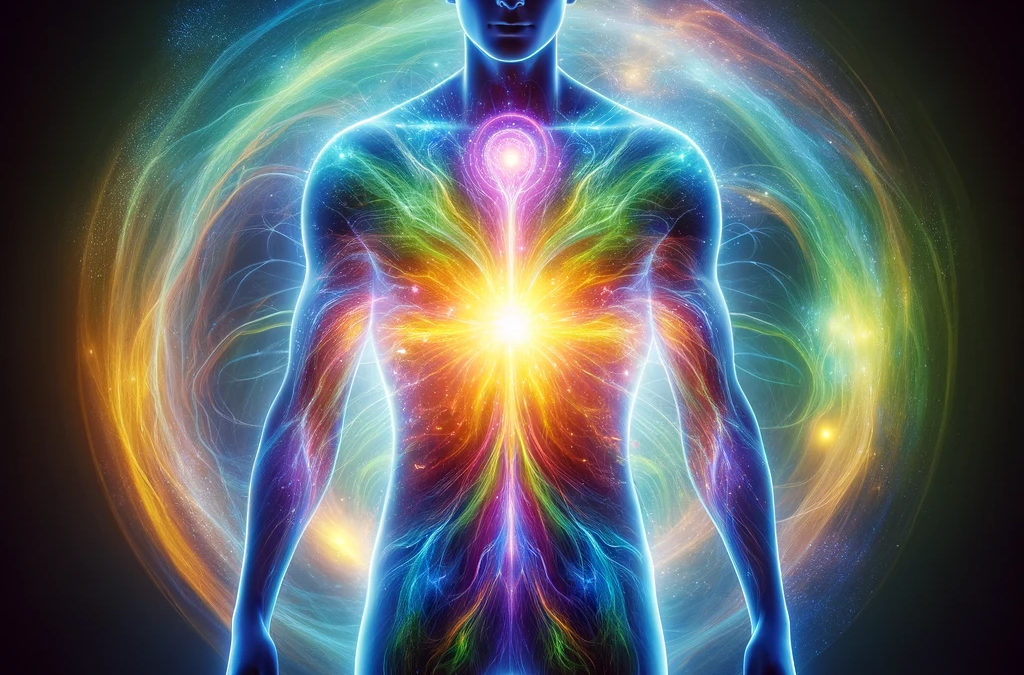It takes a spiritualized person to see an aura of another, which is often described as a subtle field of luminous radiation that surrounds a person. The concept of the aura has ancient roots, with references found in various religious and spiritual texts. In Hinduism, the aura is related to the chakras, or energy centers, within the body. Similarly, in Buddhism, the aura is connected to the concept of prana, the life force. Ancient Egyptians also depicted auras in their art, showing halos around the heads of deities and enlightened beings. In Christianity, the halo around saints is a representation of the aura.
The aura is believed to consist of several layers, each associated with different aspects of a person’s being. The most common interpretations include:
- Physical Layer: Closest to the body, reflecting physical health.
- Emotional Layer: Associated with feelings and emotions.
- Mental Layer: Related to thoughts and cognitive processes.
- Spiritual Layer: Connected to one’s spiritual well-being and higher consciousness.
The colors of the aura are also significant, with each color representing different energies and states of being. For example, blue is often associated with calmness and communication, while red may indicate vitality and passion.
In many spiritual and metaphysical traditions, the aura is seen as a reflection of the soul or spirit. Practices such as chakra balancing and aura cleansing are integral to maintaining spiritual health. In these traditions, the aura is not just an energy field but a vital component of one’s spiritual journey and growth.
In contemporary holistic healing practices, the aura is often included in discussions of wellness and personal development. Many holistic practitioners incorporate aura reading and healing into their sessions, believing that a healthy aura is essential for overall well-being. Workshops, books, and courses on aura reading and healing are widely available, reflecting a growing interest in this aspect of holistic health.
Even though most of us do not readily see others’ auras, we do sense and feel them. A bright person will exude positivity, love and caring, while negative people often show their “dark” side. How often have we described someone as having a “dark cloud” over their head? Or described someone as “shining” or a “brilliant light”?
In the spiritual classic by Paramahansa Yogananda, ‘Autobiography of a Yogi’, the author describes the aura of Mahatma Gandhi as an “all-pervasive aura of peace and devotion.” Similarly, he remarks that the aura of Therese Neumann, the Catholic Stigmatist, as an “aura of peace and joy” And when Yogananda met Nobel laureate, Rabindranath Tagore, the inspired poet of Bengal, he said, “He emanated an aura of charm, culture, and courtliness.” And in his excitement of seeing his guru, Swami Sri Yukteswar, arrive on a train in Serampore, India, he exclaimed, “The whole train is filled with the light of Master’s aura! He is there.” These occurrences could be explained away as simple expressions, but those close to Yogananda had no doubt that he saw and read auras.
In the Renaissance art world painters regularly encased their subjects in halos of light, and Jesus Christ continues to be pictured with a halo of white light around his head. (White light includes all the wavelengths of the visible spectrum at the same intensity.) The other aura colors coincide with the body’s chakras. For instance, warmer colors such as red, orange, and yellow indicate a high level of energy—which are also tied to the three lower chakras. Blue, indigo and violet emanate from the top three chakras, which have loftier energies. Then right in the middle at the heart chakra we find green, As the fourth chakra within our energy system, it governs unconditional love, empathy, and emotional equilibrium.
Auras, however, are not limited to humans. Places have them too—not as colors but as vibrations. We feel quite differently in our own home, saturated by personal energy, than we do in a place where we’re less in tune. There are light places, and dark places, busy places, and calm places—each with their own vibrational patterns that can be translated into colors.
There has been much research into communication between plants, especially trees, that suggests that they too have auras. Many believe that it is normal to see a tree’s aura if you normally see auras. Trees are living things that produce energy, which is essentially what makes up an aura. Science has discovered that trees communicate with each other via the root system and hormones. So, if trees communicate with each other, why wouldn’t they have an auric field? Trees are well known for being grounding in nature, which is why we love our forests. In Japan, and other places, tree bathing is the thing to do when one is depressed or stressed. Being in a forest environment, park, or atrium, can bring peace and balance to an individual and if in tune, one can certainly feel subtle energies, even if you’re not able to see them.
Aura photography has recently gained popularity amongst kirlian photographers. (Kirlian photography is a collection of photographic techniques used to capture the phenomenon of electrical discharges.) It is also said that a person can see their own aura by staring into a mirror, resting their eyes and using their peripheral vision to capture the edges of their aura. However, our auras change, maybe even minute by minute, depending on the circumstances. If we’re stressed, sick or tired we may see our darker side. If we’re happy and excited another set of colors will appear. If furious blackness, or loss of aura, could predominate.
For those that regularly meditate, concentration on the spinal column and it’s chakra colors (often accompanied with specific intuitive sounds) can help elevate consciousness and spiritual advancement. In meditation the devotee can bring energy from the base of the spine upward through the spinal column to the crown chakra. This kundalini technique can elevate and influence their aura colors as well; strengthening the aura to bring peace, wellness, and good health.
Other practices that can strengthen the aura and increase energy, include:
- Yoga poses.
- Positive thinking.
- Devotional chanting.
- Some pure metals such as gold, silver, and copper, worn as amulets or bracelets.
- Certain gemstones used in various ways.
- Incorporating pleasurable colors into your environment and clothing.
- Including mantras (spiritual sounds such as Aum) into your meditation technique.
- Practicing creative visualization to adjust your mood and to bring positive changes into your life.
It is no secret that the earth and its inhabitants are struggling on many levels. Our energies, spiritual development, wisdom, and priorities are in a dark phase. Most religions and historians agree that planetary life moves in circular paths. We have been here before and we will get through once again. However, it is up to us on how difficult the darkness will be before the dawn. Here at “Mu the Motherland” we believe that the last time humanity was at this developmental phase, it failed to bring in enough light and high vibration (humanity’s aura) to stop a massive planetary destruction. However, it is never too late to change direction. First, we must have that intention.


